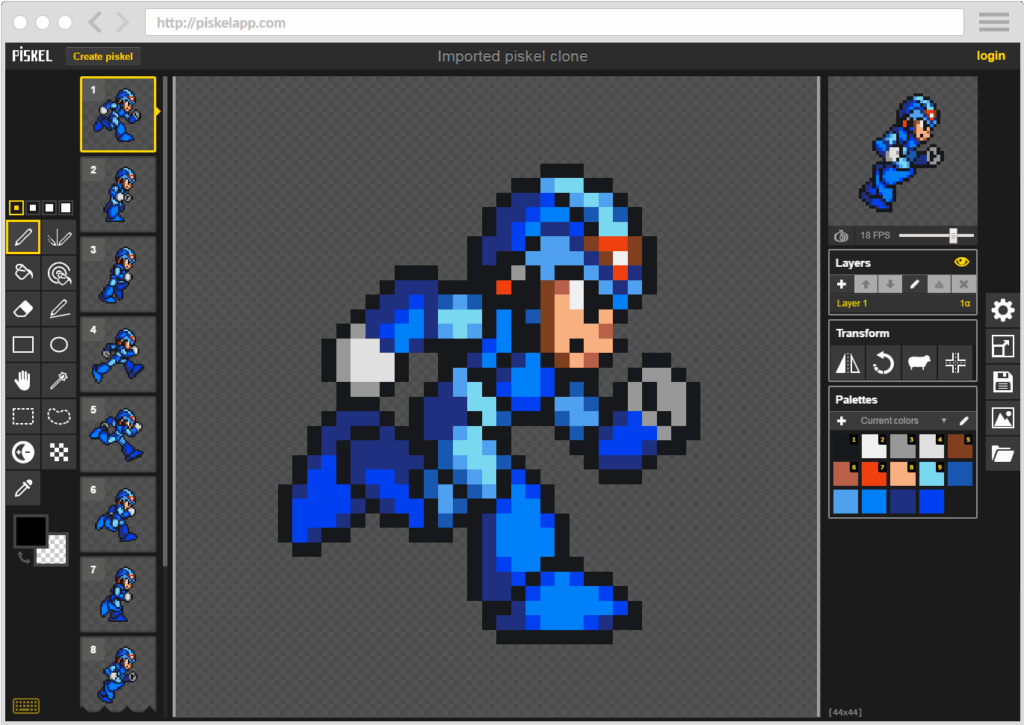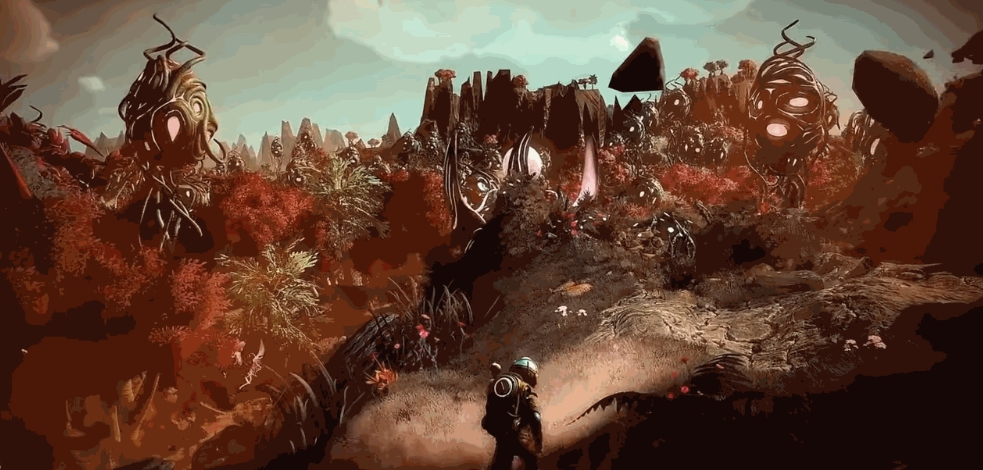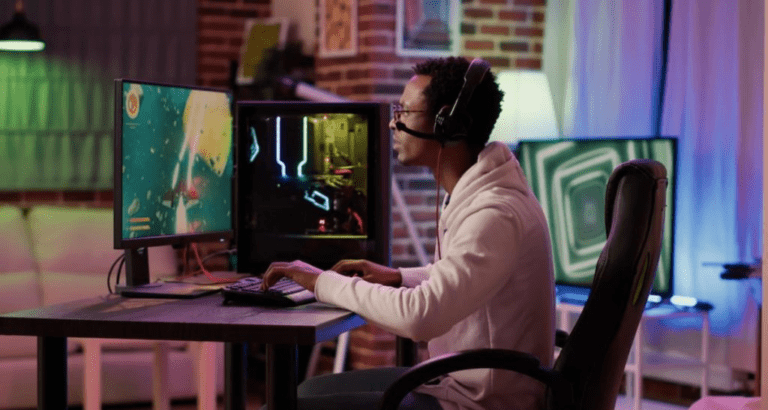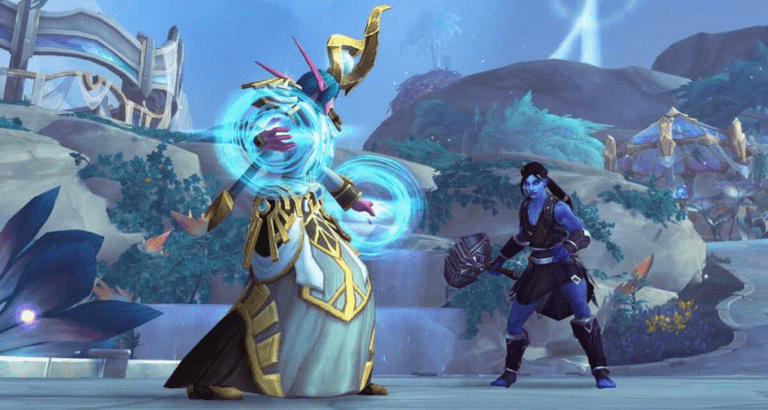Takeaway
In the competitive landscape of game development, enhancing 2D game graphics can significantly elevate the overall quality of your game without necessitating a hefty budget. By leveraging innovative techniques and tools, developers can create visually stunning experiences that captivate players and enhance gameplay. This article explores seven effective strategies to achieve this goal.
1. Embrace Pixel Art
Pixel art has seen a resurgence in popularity, thanks to its nostalgic appeal and the ability to convey complex emotions and narratives through simple visuals. By utilizing pixel art, developers can create visually striking graphics that resonate with players while keeping production costs low. Tools like Aseprite and Piskel allow for easy creation and animation of pixel art, making it accessible even for small teams.

Pixel art comes to life with the Piskel tool.
Moreover, pixel art can be optimized for various screen resolutions, ensuring that your game looks great on both high-end devices and older hardware. This versatility can help you reach a broader audience without incurring additional costs.
2. Utilize Vector Graphics
Vector graphics offer a scalable solution for 2D game design, allowing developers to create images that maintain their quality regardless of size. Unlike raster graphics, which can become pixelated when enlarged, vector graphics are defined by mathematical equations, making them ideal for games that require dynamic resizing or zooming.
Software like Adobe Illustrator and Inkscape can be used to create vector assets, which can then be exported to game engines like Unity or Godot. This approach not only saves time but also reduces the need for multiple asset versions, ultimately lowering production costs.
3. Leverage Procedural Generation
Procedural generation is a powerful technique that allows developers to create vast amounts of content with minimal manual effort. By using algorithms to generate graphics, levels, and even animations, developers can produce unique experiences for players without the need for extensive art resources.
For instance, games like “Spelunky” and “No Man’s Sky” utilize procedural generation to create diverse environments and challenges. By implementing procedural techniques, developers can focus on gameplay mechanics and narrative while still delivering visually appealing graphics. This method not only saves time but also enhances replayability, keeping players engaged for longer periods.

No Man’s Sky clearly showcases the power of procedural generation.
4. Optimize Color Palettes
Color palettes play a crucial role in defining the visual identity of a game. By carefully selecting a limited color palette, developers can create a cohesive and aesthetically pleasing look that enhances the overall quality of the game. This approach not only simplifies the design process but also reduces the workload for artists.
Tools like Coolors and Adobe Color can help developers experiment with different color combinations, ensuring that the chosen palette aligns with the game’s theme and mood. Additionally, a well-defined color palette can improve performance by reducing the number of textures and assets needed, ultimately lowering production costs.
5. Implement Effective Lighting Techniques
Lighting is a critical aspect of 2D game graphics that can dramatically affect the overall atmosphere and quality of the game. By utilizing techniques such as dynamic lighting, shadows, and ambient occlusion, developers can create depth and realism in their 2D environments.
Game engines like Unity and Godot offer built-in lighting systems that allow developers to experiment with various lighting effects without incurring significant costs. By strategically placing light sources and adjusting their properties, developers can enhance the visual appeal of their games while maintaining a manageable workload.
6. Focus on Animation Quality
Animation is a vital component of 2D game graphics that can significantly impact player engagement. High-quality animations can bring characters and environments to life, making the game more immersive. By investing time in creating smooth and fluid animations, developers can elevate the overall quality of their games without necessarily increasing their budgets.
Tools like Spine and DragonBones provide developers with the ability to create skeletal animations, which can be more efficient than traditional frame-by-frame animation. This method allows for greater flexibility and reusability of assets, ultimately saving time and resources while enhancing the visual experience.
7. Collaborate with Freelancers and Asset Marketplaces
For small development teams or indie developers, collaborating with freelancers or utilizing asset marketplaces can be a cost-effective way to enhance 2D game graphics. Platforms like Fiverr, Upwork, and Unity Asset Store offer a plethora of talented artists and pre-made assets that can be integrated into your game.
By outsourcing specific tasks or purchasing high-quality assets, developers can focus on core gameplay mechanics and narrative while still achieving a polished visual presentation. This approach not only saves time but also allows for a diverse range of artistic styles that can enhance the overall quality of the game.
Conclusion
In summary, enhancing 2D game graphics does not have to be a costly endeavor. By embracing pixel art, utilizing vector graphics, leveraging procedural generation, optimizing color palettes, implementing effective lighting techniques, focusing on animation quality, and collaborating with freelancers or asset marketplaces, developers can significantly improve the visual quality of their games without breaking the bank. These strategies not only enhance player engagement but also contribute to the overall success of the game in a competitive market.
Key Takeaways:
- Pixel art and vector graphics provide cost-effective solutions for creating visually appealing assets.
- Procedural generation allows for vast content creation with minimal manual effort.
- Optimizing color palettes can enhance visual cohesion and reduce asset workload.
- Effective lighting techniques can dramatically improve the atmosphere of a game.
- High-quality animations are crucial for player engagement and immersion.
- Collaborating with freelancers and utilizing asset marketplaces can save time and resources.
By implementing these strategies, game developers can create high-quality 2D graphics that captivate players and enhance gameplay experiences, all while staying within budget constraints.

